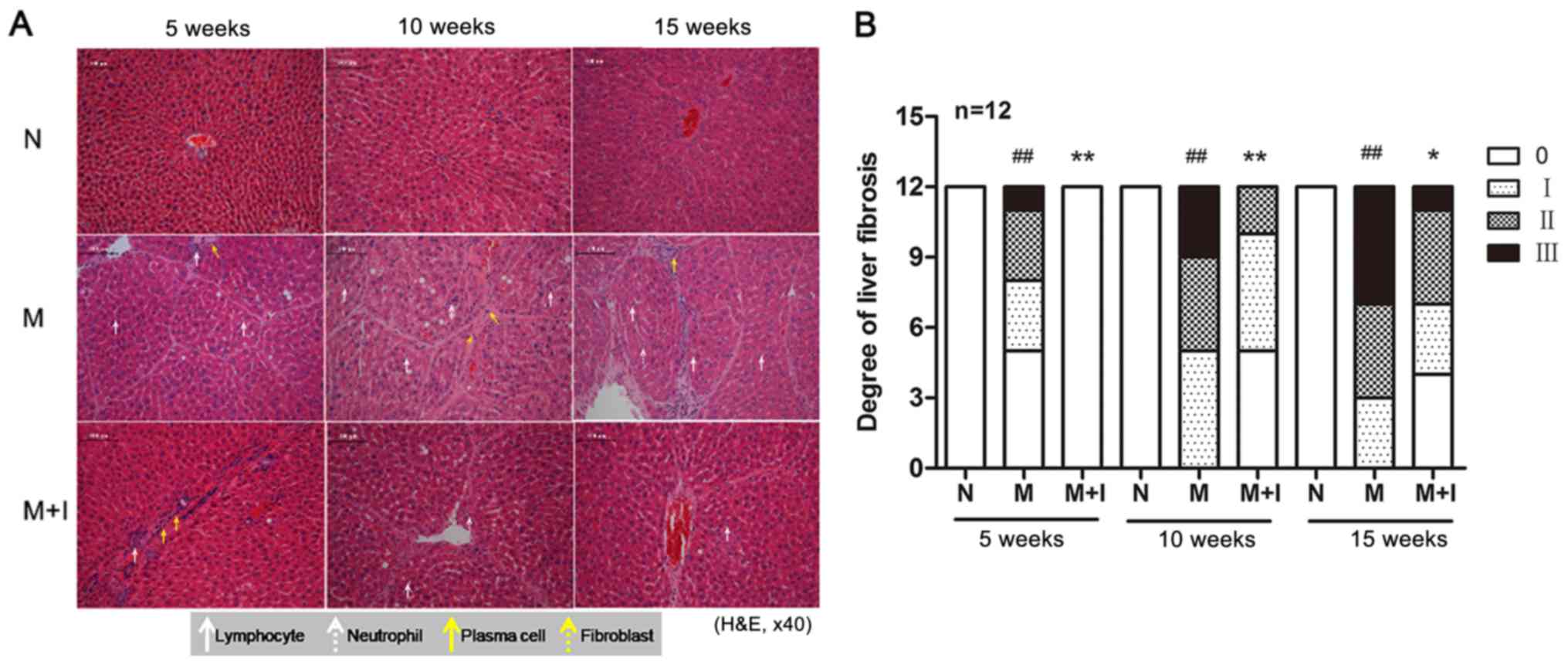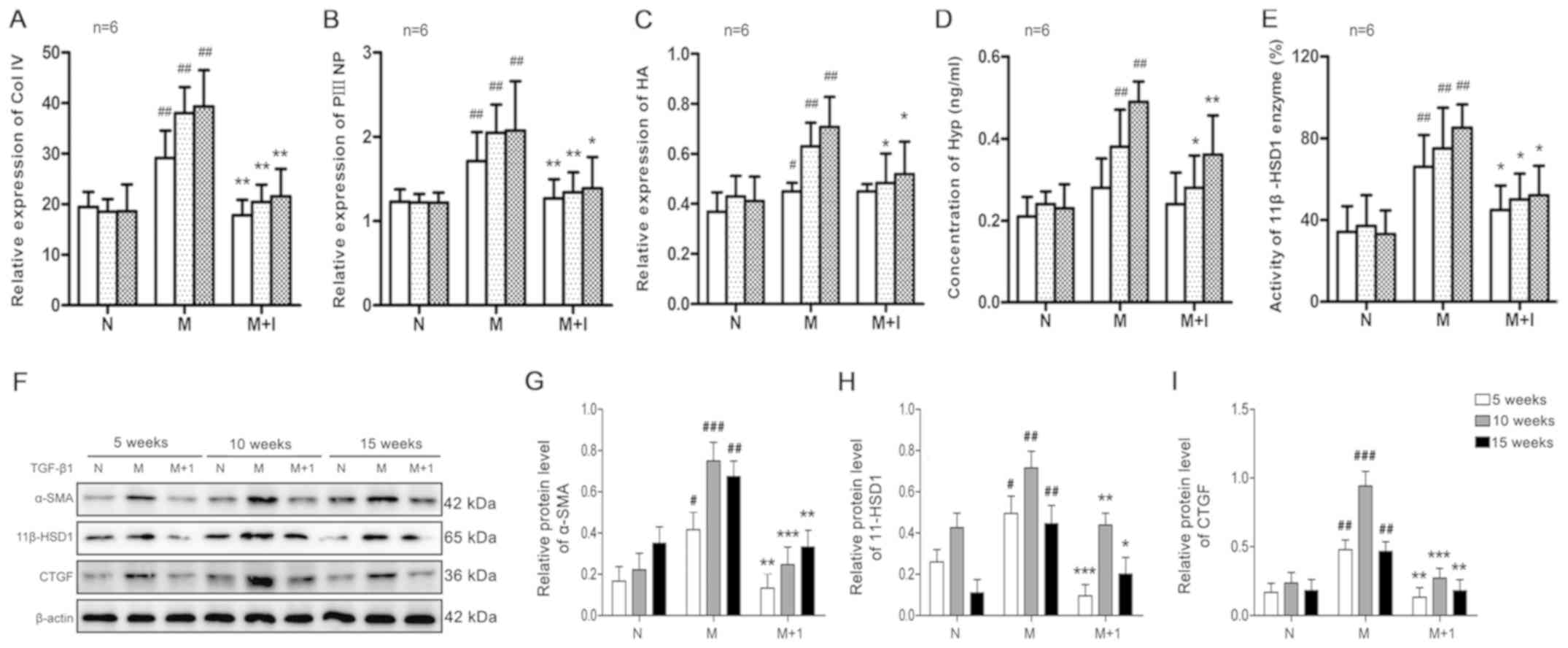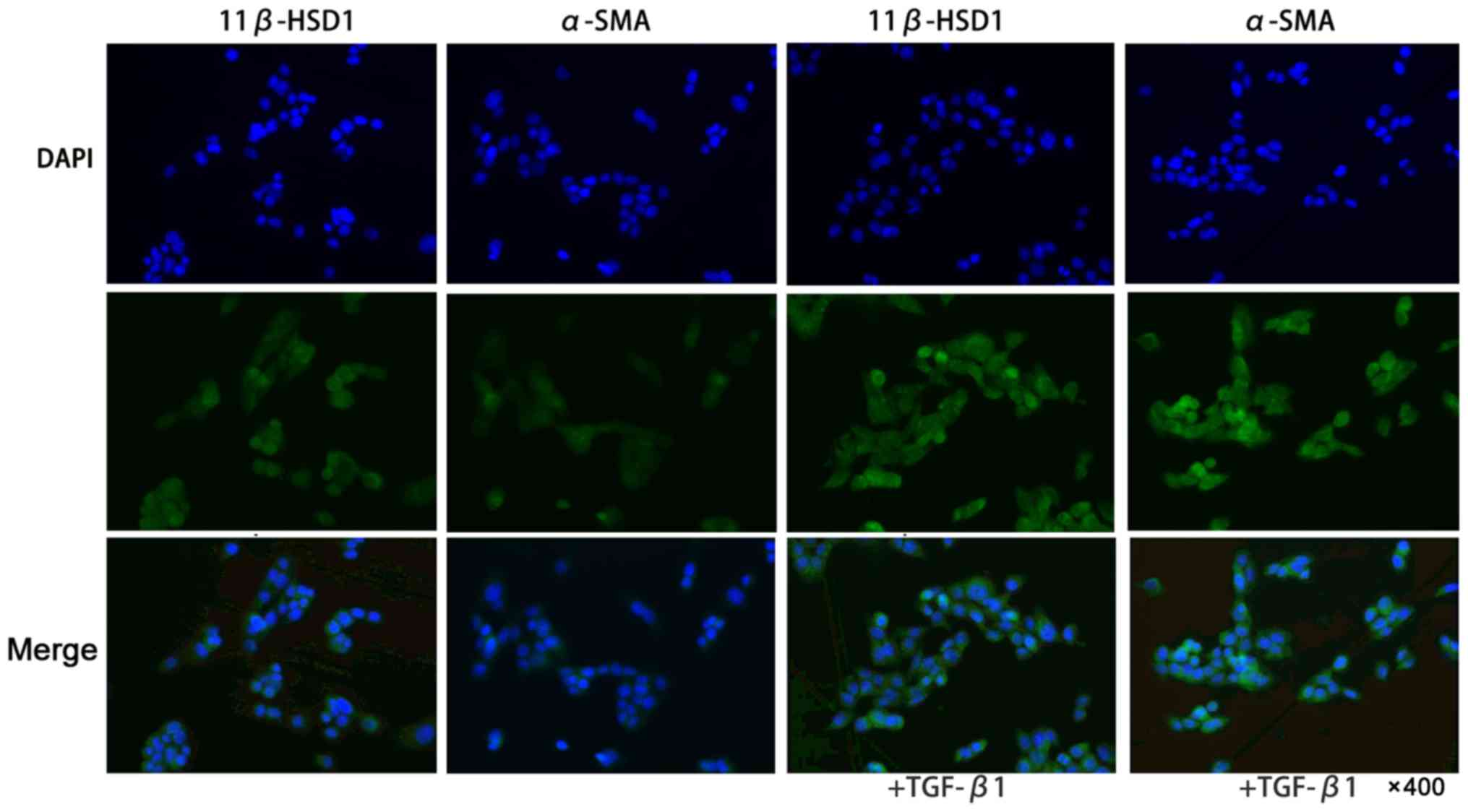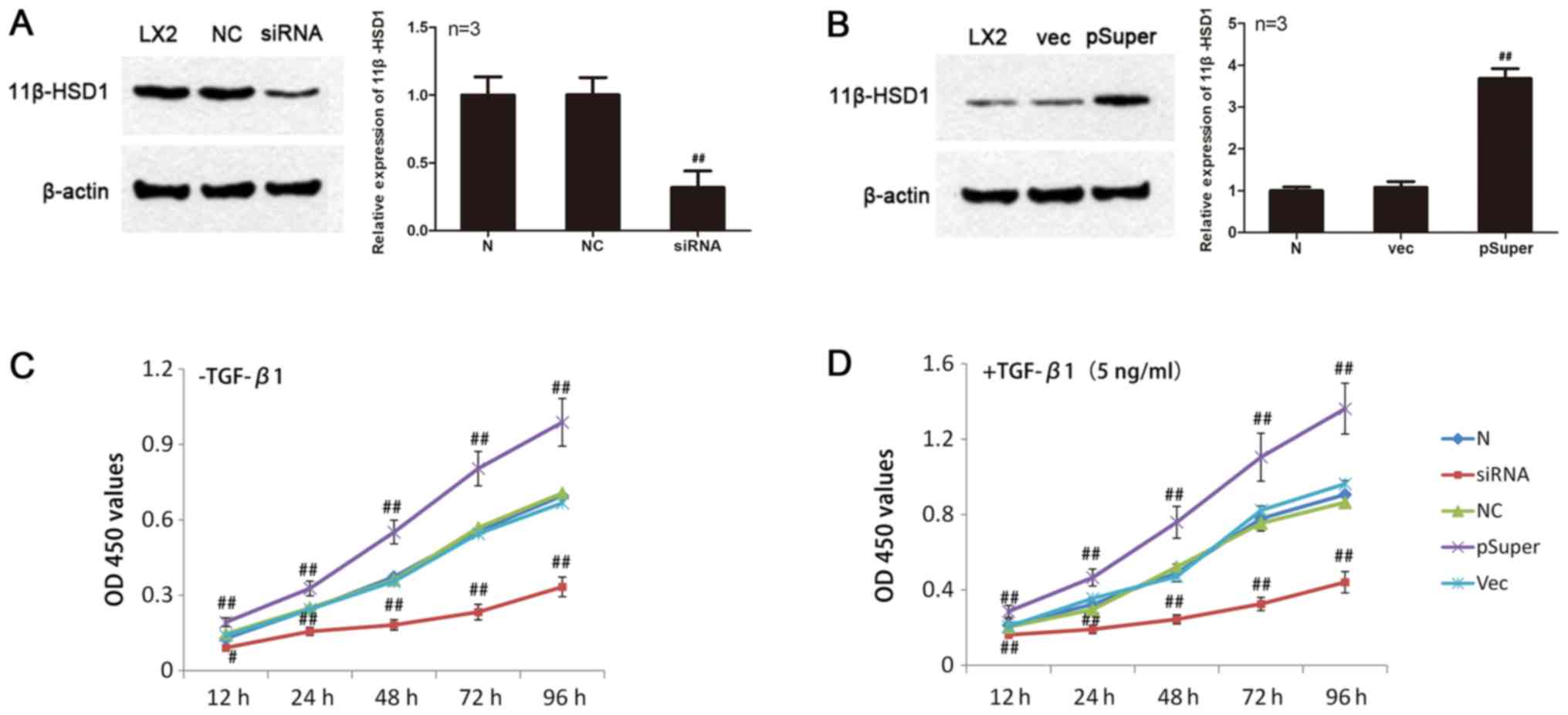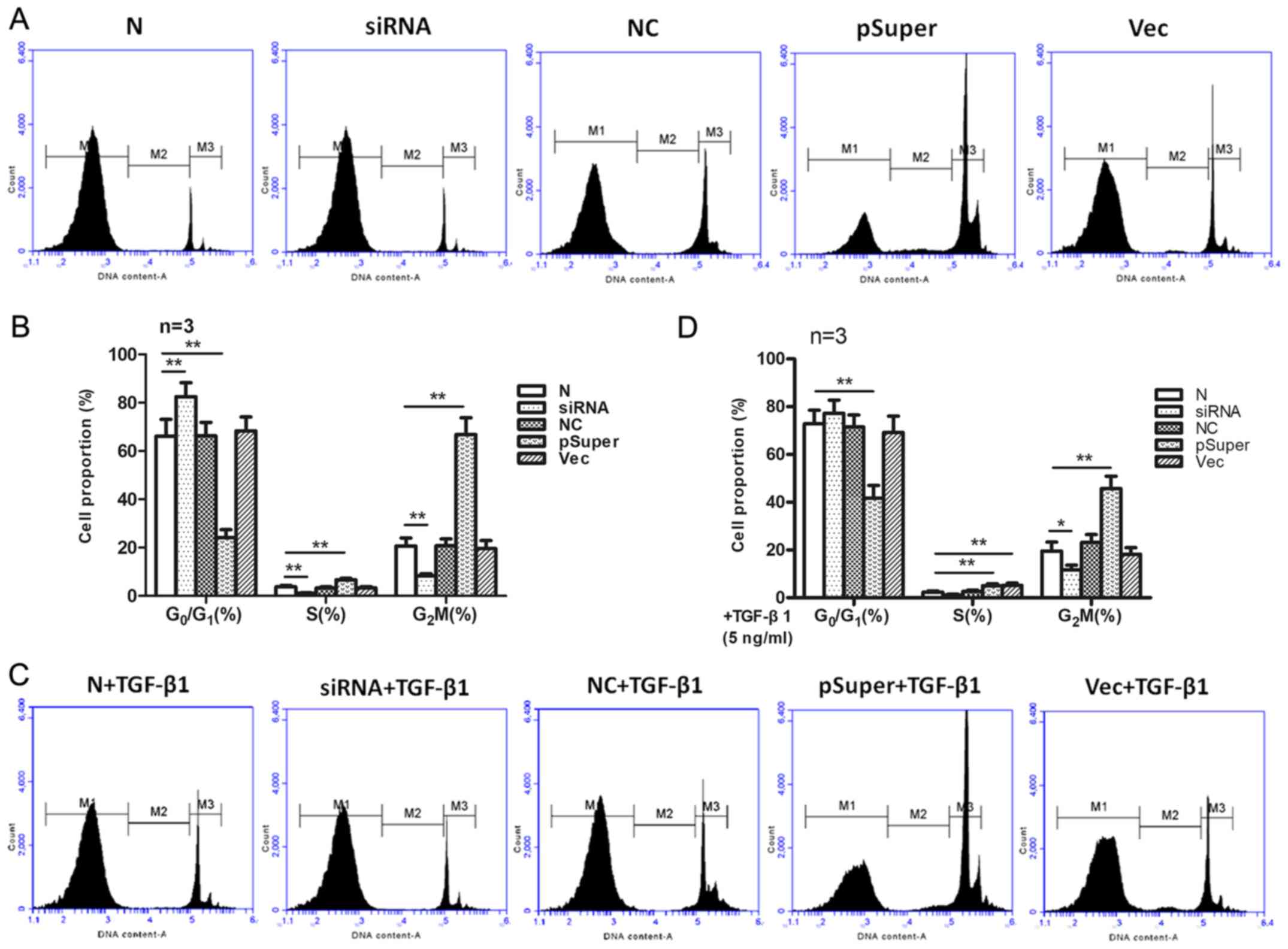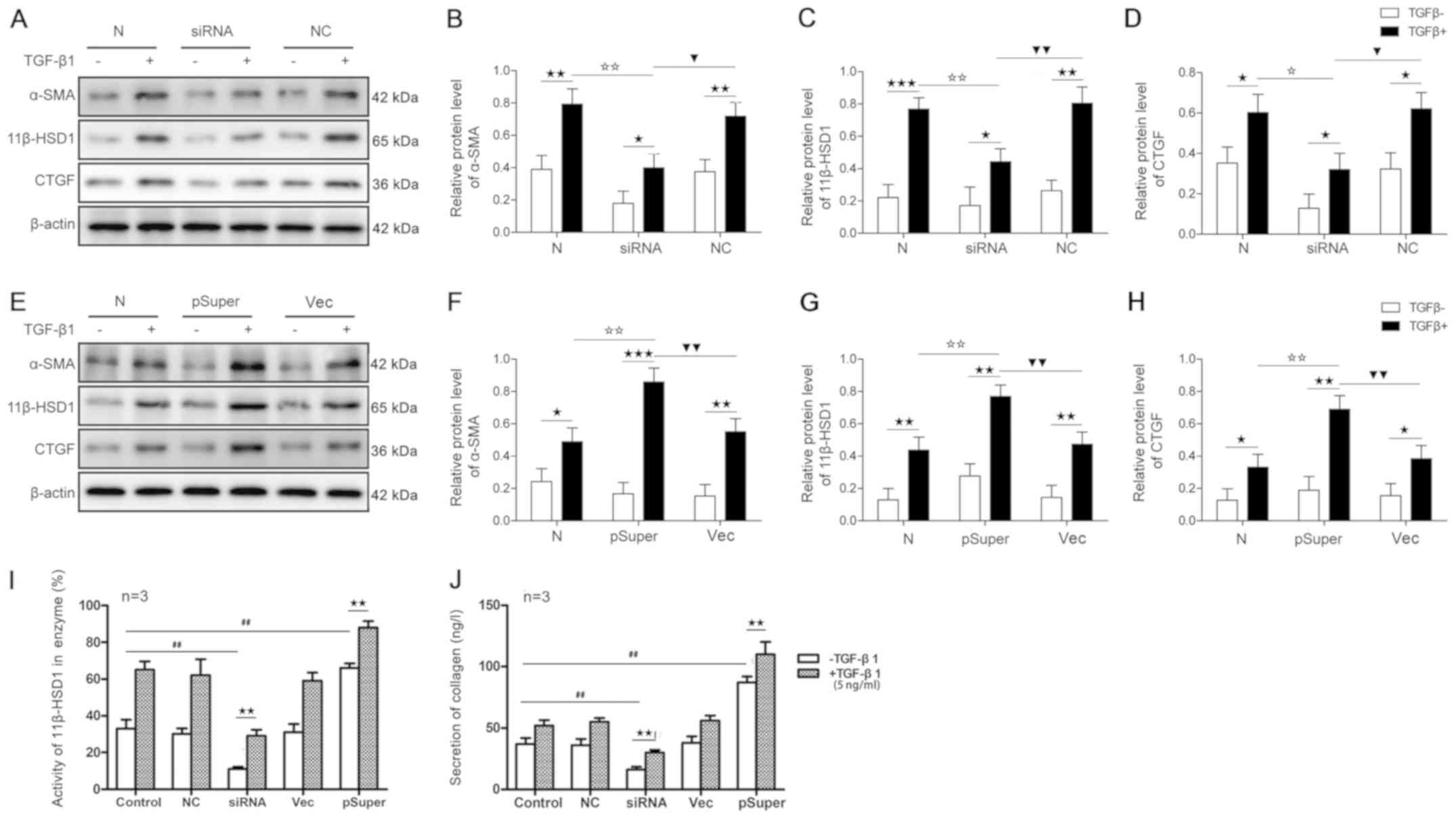|
1
|
Eijken M, Hewison M, Cooper MS, de Jong
FH, Chiba H, Stewart PM, Uitterlinden AG, Pols HA and van Leeuwen
JP: 11beta-Hydroxysteroid dehydrogenase expression and
glucocorticoid synthesis are directed by a molecular switch during
osteoblast differentiation. Mol Endocrinol. 19:3191–631. 2005.
View Article : Google Scholar
|
|
2
|
Gyllenhammer LE, Alderete TL, Mahurka S,
Allayee H and Goran MI: Adipose tissue 11βHSD1 gene expression,
βcell function and ectopic fat in obese African Americans versus
Hispanics. Obesity (Silver Spring). 22:14–18. 2014. View Article : Google Scholar : PubMed/NCBI
|
|
3
|
Tomlinson JW, Walker EA, Bujalska IJ,
Draper N, Lavery GG, Cooper MS, Hewison M and Stewart PM:
11beta-hydroxysteroid dehydrogenase type 1: A tissue-specific
regulator of glucocorticoid response. Endocr Rev. 25:831–866. 2004.
View Article : Google Scholar : PubMed/NCBI
|
|
4
|
Wake DJ and Walker BR: 11
beta-hydroxysteroid dehydrogenase type 1 in obesity and the
metabolic syndrome. Mol Cell Endocrinol. 215:45–54. 2004.
View Article : Google Scholar : PubMed/NCBI
|
|
5
|
Chapman K, Holmes M and Seckl J:
11β-hydroxysteroid dehydrogenases: Intracellular gate-keepers of
tissue glucocorticoid action. Physiol Rev. 93:1139–1206. 2013.
View Article : Google Scholar : PubMed/NCBI
|
|
6
|
Necela BM and Cidlowski JA: Mechanisms of
glucocorticoid receptor action in noninflammatory and inflammatory
cells. Proc Am Thorac Soc. 1:239–246. 2004. View Article : Google Scholar : PubMed/NCBI
|
|
7
|
Rhen T and Cidlowski JA: Antiinflammatory
action of glucocorticoids - new mechanisms for old drugs. N Engl J
Med. 353:1711–1723. 2005. View Article : Google Scholar : PubMed/NCBI
|
|
8
|
Zhang TY and Daynes RA: Macrophages from
11beta-hydroxysteroid dehydrogenase type 1-deficient mice exhibit
an increased sensitivity to lipopolysaccharide stimulation due to
TGF-beta-mediated up-regulation of SHIP1 expression. J Immunol.
179:6325–6335. 2007. View Article : Google Scholar : PubMed/NCBI
|
|
9
|
Gilmour JS, Coutinho AE, Cailhier JF, Man
TY, Clay M, Thomas G, Harris HJ, Mullins JJ, Seckl JR, Savill JS,
et al: Local amplification of glucocorticoids by 11
beta-hydroxysteroid dehydrogenase type 1 promotes macrophage
phagocytosis of apoptotic leukocytes. J Immunol. 176:7605–7611.
2006. View Article : Google Scholar : PubMed/NCBI
|
|
10
|
Ezhilarasan D, Sokal E and Najimi M:
Hepatic fibrosis: It is time to go with hepatic stellate
cell-specific therapeutic targets. Hepatobiliary Pancreat Dis Int.
17:192–197. 2018. View Article : Google Scholar : PubMed/NCBI
|
|
11
|
Koyama Y, Xu J, Liu X and Brenner DA: New
Developments on the Treatment of Liver Fibrosis. Dig Dis.
34:589–596. 2016. View Article : Google Scholar : PubMed/NCBI
|
|
12
|
Schnabl B, Kweon YO, Frederick JP, Wang
XF, Rippe RA and Brenner DA: The role of Smad3 in mediating mouse
hepatic stellate cell activation. Hepatology. 34:89–100. 2001.
View Article : Google Scholar : PubMed/NCBI
|
|
13
|
Pellicoro A, Ramachandran P, Iredale JP
and Fallowfield JA: Liver fibrosis and repair: Immune regulation of
wound healing in a solid organ. Nat Rev Immunol. 14:181–194. 2014.
View Article : Google Scholar : PubMed/NCBI
|
|
14
|
Fabris L, Strazzabosco M, Crosby HA,
Ballardini G, Hubscher SG, Kelly DA, Neuberger JM, Strain AJ and
Joplin R: Characterization and isolation of ductular cells
coexpressing neural cell adhesion molecule and Bcl-2 from primary
cholangiopathies and ductal plate malformations. Am J Pathol.
156:1599–1612. 2000. View Article : Google Scholar : PubMed/NCBI
|
|
15
|
Huang YH, Chen YX, Zhang LJ, Chen ZX and
Wang XZ: Hydrodynamics-based transfection of rat interleukin-10
gene attenuates porcine serum-induced liver fibrosis in rats by
inhibiting the activation of hepatic stellate cells. Int J Mol Med.
34:677–686. 2014. View Article : Google Scholar : PubMed/NCBI
|
|
16
|
Pereira RM, dos Santos RA, da Costa Dias
FL, Teixeira MM and Simões e Silva AC: Renin-angiotensin system in
the pathogenesis of liver fibrosis. World J Gastroenterol.
15:2579–2586. 2009. View Article : Google Scholar : PubMed/NCBI
|
|
17
|
Lam BP, Jeffers T, Younoszai Z, Fazel Y
and Younossi ZM: The changing landscape of hepatitis C virus
therapy: Focus on interferon-free treatment. Therap Adv
Gastroenterol. 8:298–312. 2015. View Article : Google Scholar : PubMed/NCBI
|
|
18
|
Friedman SL: Liver fibrosis - from bench
to bedside. J Hepatol. 38 (Suppl 1):S38–S53. 2003. View Article : Google Scholar : PubMed/NCBI
|
|
19
|
Inagaki Y and Okazaki I: Emerging insights
into Transforming growth factor beta Smad signal in hepatic
fibrogenesis. Gut. 56:284–292. 2007. View Article : Google Scholar : PubMed/NCBI
|
|
20
|
Kluwe J, Mencin A and Schwabe RF:
Toll-like receptors, wound healing, and carcinogenesis. J Mol Med
(Berl). 87:125–138. 2009. View Article : Google Scholar : PubMed/NCBI
|
|
21
|
Görbig MN, Ginès P, Bataller R, Nicolás
JM, Garcia-Ramallo E, Tobías E, Titos E, Rey MJ, Clària J, Arroyo
V, et al: Atrial natriuretic peptide antagonizes endothelin-induced
calcium increase and cell contraction in cultured human hepatic
stellate cells. Hepatology. 30:501–509. 1999. View Article : Google Scholar : PubMed/NCBI
|
|
22
|
Grieb G, Steffens G, Pallua N, Bernhagen J
and Bucala R: Circulating fibrocytes - biology and mechanisms in
wound healing and scar formation. Int Rev Cell Mol Biol. 291:1–19.
2011. View Article : Google Scholar : PubMed/NCBI
|
|
23
|
Schlernitzauer A, Oiry C, Hamad R, Galas
S, Cortade F, Chabi B, Casas F, Pessemesse L, Fouret G,
Feillet-Coudray C, et al: Chicoric acid is an antioxidant molecule
that stimulates AMP kinase pathway in L6 myotubes and extends
lifespan in Caenorhabditis elegans. PLoS One. 8:e787882013.
View Article : Google Scholar : PubMed/NCBI
|
|
24
|
Di Sario A, Bendia E, Svegliati Baroni G,
Ridolfi F, Casini A, Ceni E, Saccomanno S, Marzioni M, Trozzi L,
Sterpetti P, et al: Effect of pirfenidone on rat hepatic stellate
cell proliferation and collagen production. J Hepatol. 37:584–591.
2002. View Article : Google Scholar : PubMed/NCBI
|
|
25
|
Iredale JP: A cut above the rest? MMP-8
and liver fibrosis gene therapy. Gastroenterology. 126:1199–1201.
2004. View Article : Google Scholar : PubMed/NCBI
|
|
26
|
Cremer MA, Rosloniec EF and Kang AH: The
cartilage collagens: A review of their structure, organization, and
role in the pathogenesis of experimental arthritis in animals and
in human rheumatic disease. J Mol Med (Berl). 76:275–288. 1998.
View Article : Google Scholar : PubMed/NCBI
|
|
27
|
Bhunchet E, Eishi Y and Wake K:
Contribution of immune response to the hepatic fibrosis induced by
porcine serum. Hepatology. 23:811–817. 1996. View Article : Google Scholar : PubMed/NCBI
|
|
28
|
Kim JH, Lee S, Lee MY and Shin HK:
Therapeutic effect of Soshiho-tang, a traditional herbal formula,
on liver fibrosis or cirrhosis in animal models: A systematic
review and meta-analysis. J Ethnopharmacol. 154:1–16. 2014.
View Article : Google Scholar : PubMed/NCBI
|
|
29
|
Andrade RG, Gotardo BM, Assis BC, Mengel J
and Andrade ZA: Immunological tolerance to pig-serum partially
inhibits the formation of septal fibrosis of the liver in
Capillaria hepatica-infected rats. Mem Inst Oswaldo Cruz.
99:703–707. 2004. View Article : Google Scholar : PubMed/NCBI
|
|
30
|
Cai DY, Zhao G, Chen JC, Ye GM, Bing FH
and Fan BW: Therapeutic effect of Zijin capsule in liver fibrosis
in rats. World J Gastroenterol. 4:260–263. 1998. View Article : Google Scholar : PubMed/NCBI
|
|
31
|
Goodman ZD: Grading and staging systems
for inflammation and fibrosis in chronic liver diseases. J Hepatol.
47:598–607. 2007. View Article : Google Scholar : PubMed/NCBI
|
|
32
|
Lee JH, Jang EJ, Seo HL, Ku SK, Lee JR,
Shin SS, Park SD, Kim SC and Kim YW: Sauchinone attenuates liver
fibrosis and hepatic stellate cell activation through TGF-β/Smad
signaling pathway. Chem Biol Interact. 224:58–67. 2014. View Article : Google Scholar : PubMed/NCBI
|
|
33
|
Yang Y, Wang H, Lv X, Wang Q, Zhao H, Yang
F, Yang Y and Li J: Involvement of cAMP-PKA pathway in adenosine A1
and A2A receptor-mediated regulation of acetaldehyde-induced
activation of HSCs. Biochimie. 115:59–70. 2015. View Article : Google Scholar : PubMed/NCBI
|
|
34
|
Legeza B, Marcolongo P, Gamberucci A,
Varga V, Bánhegyi G, Benedetti A and Odermatt A: Fructose,
Glucocorticoids and Adipose Tissue: Implications for the Metabolic
Syndrome. Nutrients. 9:4262017. View Article : Google Scholar
|
|
35
|
Morton NM, Holmes MC, Fiévet C, Staels B,
Tailleux A, Mullins JJ and Seckl JR: Improved lipid and lipoprotein
profile, hepatic insulin sensitivity, and glucose tolerance in
11beta-hydroxysteroid dehydrogenase type 1 null mice. J Biol Chem.
276:41293–41300. 2001. View Article : Google Scholar : PubMed/NCBI
|
|
36
|
Seckl JR, Morton NM, Chapman KE and Walker
BR: Glucocorticoids and 11beta-hydroxysteroid dehydrogenase in
adipose tissue. Recent Prog Horm Res. 59:359–393. 2004. View Article : Google Scholar : PubMed/NCBI
|
|
37
|
Konopelska S, Kienitz T, Hughes B, Pirlich
M, Bauditz J, Lochs H, Strasburger CJ, Stewart PM and Quinkler M:
Hepatic 11beta-HSD1 mRNA expression in fatty liver and nonalcoholic
steatohepatitis. Clin Endocrinol (Oxf). 70:554–560. 2009.
View Article : Google Scholar : PubMed/NCBI
|
|
38
|
Ahmed A, Rabbitt E, Brady T, Brown C,
Guest P, Bujalska IJ, Doig C, Newsome PN, Hubscher S, Elias E, et
al: A switch in hepatic cortisol metabolism across the spectrum of
non alcoholic fatty liver disease. PLoS One. 7:e295312012.
View Article : Google Scholar : PubMed/NCBI
|
|
39
|
Zou X, Ramachandran P, Kendall TJ,
Pellicoro A, Dora E, Aucott RL, Manwani K, Man TY, Chapman KE,
Henderson NC, et al: 11Beta-hydroxysteroid dehydrogenase-1
deficiency or inhibition enhances hepatic myofibroblast activation
in murine liver fibrosis. Hepatology. 67:2167–2181. 2018.
View Article : Google Scholar : PubMed/NCBI
|
|
40
|
Yang R, Xu Y, Dai Z, Lin X and Wang H: The
Immunologic Role of Gut Microbiota in Patients with Chronic HBV
Infection. J Immunol Res. 2018:23619632018. View Article : Google Scholar : PubMed/NCBI
|
|
41
|
Chen G, Wang R, Chen H, Wu L, Ge RS and
Wang Y: Gossypol ameliorates liver fibrosis in diabetic rats
induced by high-fat diet and streptozocin. Life Sci. 149:58–64.
2016. View Article : Google Scholar : PubMed/NCBI
|
|
42
|
Kottmann RM, Trawick E, Judge JL, Wahl LA,
Epa AP, Owens KM, Thatcher TH, Phipps RP and Sime PJ: Pharmacologic
inhibition of lactate production prevents myofibroblast
differentiation. Am J Physiol Lung Cell Mol Physiol.
309:L1305–L1312. 2015. View Article : Google Scholar : PubMed/NCBI
|















